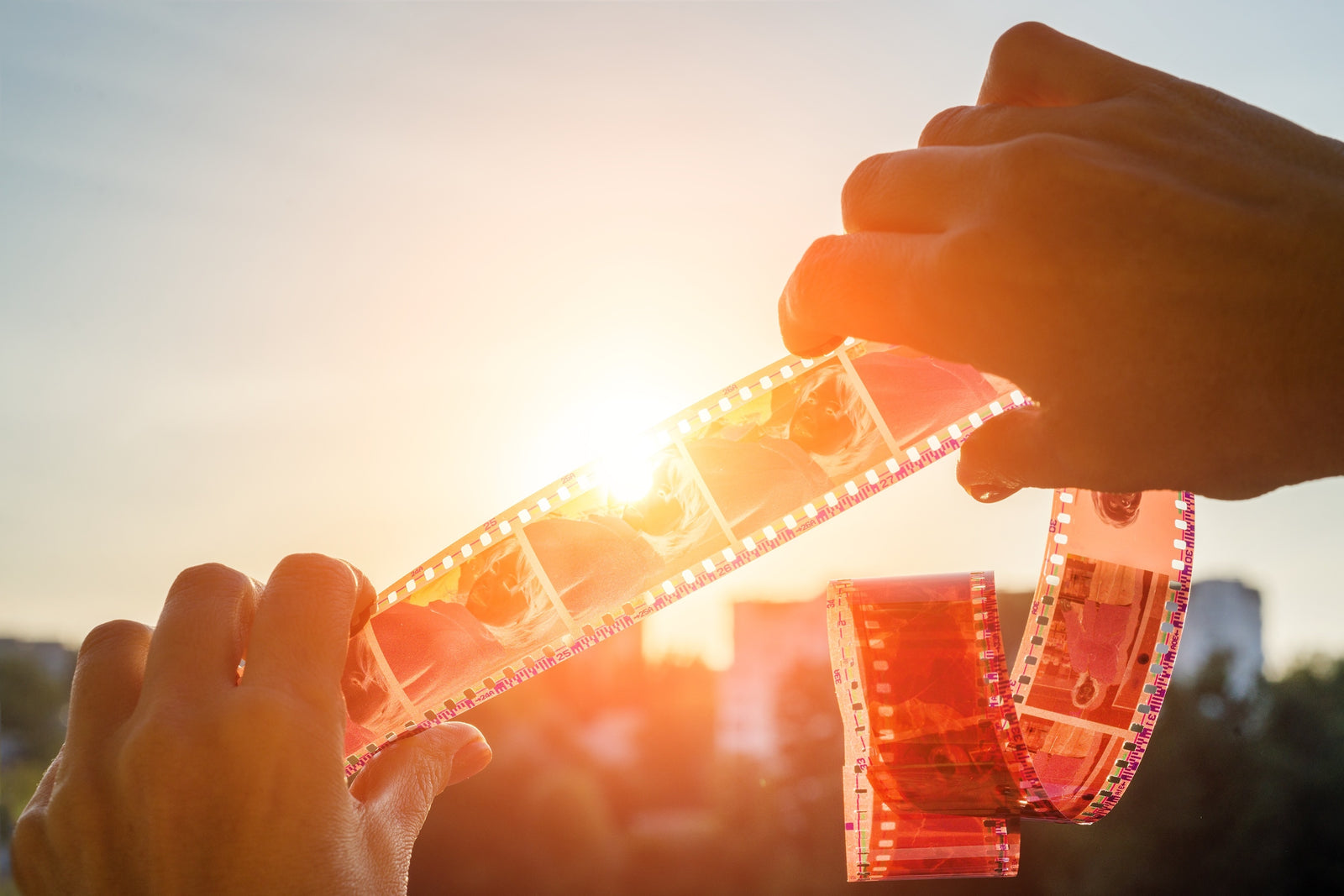What to Do with Photo Negatives
June 24, 2021

A film negative is inverted, so it reproduces light areas of subjects as dark and dark parts as light.
Negatives are available commercially in sheets, rolls, or cartridges, with rolls by far the most common. When commercial labs process negative film rolls, they typically cut them into strips of 5 to 7 frames. Prints from negatives are created with an enlarger in a darkroom that projects the image from the negative onto light-sensitive paper. The paper is placed in a series of chemical baths to create visible, permanent images. With the advent of digital photography, darkrooms fell out of favor, although some amateur hobbyists, art school students, and professional photographers still print photos from negatives the traditional way.
A Brief History of Negative Film
In 1839, the English scientist William Henry Fox Talbot was the first to successfully demonstrate a negative photographic process. While incredibly time-consuming and cumbersome, his method theoretically enabled producing unlimited positive prints from a single negative. By the mid-19th century, glass plates became the standard negative because early transparent plastics were too expensive and didn’t offer the same quality.
While George Eastman invented the first roll film made of paper in 1885, it took another four years before roll film on plastic was introduced. This negative film was made of highly flammable nitrate. Although safety film made of cellulose acetate was released in 1908, nitrate film was used well into the 1940s.
First Step: Purge Negatives
Hopefully, you haven’t kept every photo you ever took. Likewise, it’s not necessary to keep negatives that are blurry or 100 shots of your baby who is now age 30! Purging them before getting them professionally scanned will save money and prevent digital clutter.
Second Step: Scan Negatives
After you’ve pared down your negative collection, scan them at the highest resolution possible and check the digital image prior to discarding any negatives. Reasons to scan negatives:
- Negatives are first-generation images, so scanning them provides better clarity and details than scanning prints (second generation images)
- In some cases, the negative may be the only version of a photo
- Negatives are easily damaged even when stored properly because dust and debris can settle on the surface and cause tiny scratches
- Black and white negatives contain silver halide emulsion that is especially prone to scratches over time
- Color negatives are quite unstable — unrealistic color shifts can impact negatives that are just 10 years-old
- A dwindling number of labs still print photos from negatives and this service can be expensive
Benefits of Scanning Negatives
Scanning black and white negatives and using photo editing software to remove scratches or dust specks is a lot easier than the old-fashioned retouching method employing permanent dyes and tiny brushes. Scanning color negatives enables color correcting that would be difficult to achieve, especially for amateur photographers processing their own film. While you can print photos from old negatives, printing them from a negative professionally scanned at high resolution can produce excellent results.
Are Negatives Worth Keeping After Scanning?
Many photographers, librarians, and archivists recommend retaining negatives because they argue that digital isn’t a fixed format and not yet proven to be stable or archival. On the other hand, negative film degrades over time. It’s definitely worth keeping excellent quality negatives if you’re a fine art photographer and sell your work. If you keep negatives, make sure you store them properly. Negatives are best stored in archival plastic negative sheets collected in a ring binder or archival quality envelopes. The ring binders or envelopes should be stored in a cool location, preferably below 68 degrees Fahrenheit (20 degrees Celsius). Never store negatives in places with humidity/temperature fluctuations or dusty environments, such as garages, basements, or attics!
Leave a comment
Comments will be approved before showing up.
Also in Blog

How to Enlarge a Picture for Printing
July 20, 2021

How to Make a Digital Photo Album
July 20, 2021

How to Share Digital Media
July 20, 2021
Purchase
CONNECT
We're here to help!
For All General Inquiries:
Phone: 888.333.2808
Email: info@scandigital.com
Business Hours (EST):
Monday - Friday: 9:30am - 5:30pm
ScanDigital Chicago
(Drop-Off & Pick-Up Only):
Phone: 888.324.6436
Business Hours (CST):
Monday - Friday: 10:00am - 4:00pm
News & Updates
Sign up to get the latest on sales, new releases and more…
© 2025 ScanDigital, Inc..
